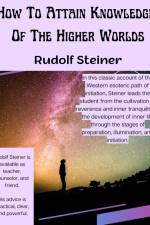av Rudolf Steiner
185,-
In this classic account of the Western esoteric path of initiation, Steiner leads the student from the cultivation of reverence and inner tranquility to the development of inner life through the stages of preparation, illumination, and initiation. Practical exercises in inner and outer observation and moral development are described. By patiently and persistently following these suggestions, new "organs" of soul and spirit begin to form, revealing the contours of higher worlds that had been concealed from us. Here, Rudolf Steiner is available as teacher, counselor, and friend. His advice is practical, clear, and powerful. Being deeply interested in Dr. Steiner's work and teachings, and desirous of sharing with my English-speaking friends the many invaluable glimpses of Truth which are to be found therein, I decided upon the translation of the present volume. It is due to the kind co-operation of several friends who prefer to be anonymous that this task has been accomplished, and I wish to express my hearty thanks for the literary assistance rendered by them-also to thank Dr. Peipers of Munich for permission to reproduce his excellent photograph of the author. The special value of this volume consists, I think, in the fact that no advice is given and no statement made which is not based on the personal experience of the author, who is, in the truest sense, both a mystic and an occultist. If the present volume should meet with a reception justifying a further venture, we propose translating and issuing during the coming year a further series of articles by Dr. Steiner in continuation of the same subject, and a third volume will consist of the articles now appearing in the pages of The Theosophist, entitled "The Education of Children." While the pleasant German vernacular is still discernable in the text of this work, we wish to state that it has been Americanized in spelling, phraseology, and definition, to make plainer to the Western mind the wonderful truths experienced by its distinguished author. The readers, especially Occult, Theosophic, Masonic, and New Thought students, we believe, will appreciate the clearness with which his teachings lead to the simple rich Harmony of Life.

